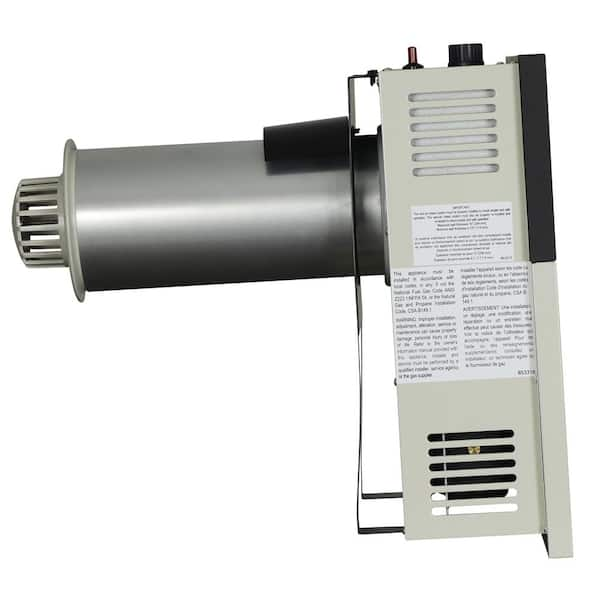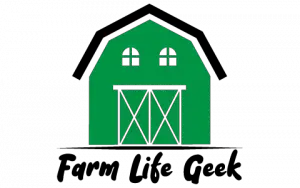Installing a vented propane heater is a relatively simple process. First, you will need to purchase the appropriate size and type of heater for your needs. Next, locate the nearest propane supplier and have them deliver the necessary amount of fuel to your home.
Once you have everything you need, follow these steps:
1. Choose a location for your heater that is well-ventilated and away from any flammable materials.
2. Install the venting system according to the manufacturer’s instructions.
3. Connect the flexible gas line from the regulator to the inlet on the heater.
4. Open the shut-off valve on the regulator and check all connections for leaks with soapy water.
- Begin by shutting off the gas supply to your propane heater
- You will need a crescent wrench to do this
- Next, disconnect the vent pipe from the back of the heater
- This can be done by unscrewing the connection with your hands or using a pair of pliers
- Once the vent pipe is disconnected, you can remove the old propane heater from its location
- To install the new propane heater, first connect the vent pipe to the back of the unit using either your hands or a pair of pliers
- Next, use a crescent wrench to turn on the gas supply to your new propane heater
- Be sure to check all connections for leaks before igniting the unit!
How to Install Direct Vent Propane Wall Heater
If you’re looking for a way to heat your home without using an expensive central heating system, a propane wall heater is a great option. Not only are they relatively inexpensive to purchase and install, but they’re also very efficient at heating up small spaces. Here’s everything you need to know about how to install a direct vent propane wall heater in your home.
1. Choose the Right Location: The first step is to choose the right location for your propane wall heater. You’ll want to choose a spot that’s close to an outside wall so that you can easily run the necessary ventilation pipes. Avoid placing the heater near flammable materials such as curtains or furniture, and make sure there’s plenty of clearance around it so that nothing can come into contact with the hot surfaces.
2. Install Ventilation Pipes: Once you have the location chosen, it’s time to install the ventilation pipes. The specific installation instructions will vary depending on the model of heater you’re using, but in general, you’ll need to drill two holes in the outside wall – one for intake and one for exhaust. Run the appropriate length of pipe from each hole to connect them to the openings on the back of the heater.
3 Use Sealant and Caulking: To prevent any leaks, be sure to use plenty of sealant and caulk around all ofthe joints inthe ventilation system. 4 Hang Heater on Wall: The final step isto hangtheheateronwall usingthe brackets provided withyourmodel . Make sureitislevel beforesecuringinplace .
5 Connect Gas Line: Once th eheateris securelymounted ,youcanconnectthesupply linefromthepropane tank . Be suretofollowalloftheright safetyprocedures when workingwithgas lines .
And that’s it!
How to Build a Vented Propane Heater
When it comes to heating your home, there are many different options to choose from. If you’re looking for an efficient and cost-effective way to heat your home, a propane heater is a great option. Propane is a clean-burning fuel that is very efficient, so you can save money on your energy bills while still keeping your home warm and comfortable.
Building a vented propane heater is relatively simple and can be done in just a few hours. Here’s what you need to do:
1. Start by gathering all of the materials you will need.
You will need 4 – 2x4s, 1 – 4×8 sheet of plywood, 1- quart of exterior paint or primer, screws, nails, L-brackets, and caulk.
2. Cut the 2x4s into eight equal pieces. These will be used as the frame for your heater.
3. Assemble the frame using screws or nails and L-brackets at the corners. Make sure that the frame is square before moving on to the next step.
4. Cut the plywood down to size so that it fits snugly inside the frame.
This will be the back of your heater. Secure it in place with screws or nails around the perimeter of the frame .
5 .
Now it’s time to add some ventilation holes . Drill four holes evenly spaced apart near the top of the plywood backing . These holes should be big enough for air to flow through but small enough so that bugs and other critters can’t get in .
6 Next , cut a hole in one side ofthe frame forthe exhaust pipe . The sizeof this holewill depend onthe sizeof venting pipeyou have available , butit should be largeenoughfor airto flowfreely throughit . 7 Finally , add somemoreventilationholesaroundthe bottomofthe unitsofreshaircan enterand helpwithcombustion . 8 Once everythingis cutand drilled , giveyourunita coator twoofpaint ordeckstain totie everythingtogetherand help protectit fromthe elements .
Vented Propane Heater for Cabin
A vented propane heater is an ideal choice for a cabin or other small space. Here are some things to consider when choosing a vented propane heater:
Size: Vented propane heaters come in a variety of sizes.
Choose one that will be appropriate for the size of your cabin.
BTUs: BTUs (British Thermal Units) measure the amount of heat a heater can produce. The higher the BTU rating, the more powerful the heater.
Consider the climate in your area and choose a heater with enough BTUs to keep your cabin comfortable.
Fuel type: Propane is a clean-burning fuel, so it’s an environmentally friendly option. It’s also less expensive than electricity, so it will save you money on your energy bills.
Safety features: Look for a vented propane heater with safety features like an automatic shut-off if the unit tips over or if it gets too hot. These features will help to prevent accidents and injuries.
Direct Vent Propane Heater No Electricity
A direct vent propane heater is a great option for those who want to heat their home without using electricity. This type of heater uses a small amount of propane to generate heat, which is then circulated through the home using a fan. The advantage of this type of heater is that it does not require an electrical hookup, making it ideal for use in rural areas or during power outages.
Another benefit of direct vent propane heaters is that they are very efficient, providing plenty of warmth while using very little fuel.

Credit: www.homedepot.com
Do You Need to Vent When Using Propane Heater?
When using propane heaters, it is not necessary to vent the area. However, if you are using the heater in an enclosed space, it is important to open a window or door to ensure that there is proper ventilation.
How Much Does It Cost to Install a Direct Vent Propane Heater?
Propane heaters are a great way to keep your home warm and comfortable during the colder months. But how much does it cost to install one of these handy devices? Here is a breakdown of the costs associated with installing a direct vent propane heater.
The first thing you need to do is purchase the heater itself. Prices for these units can range anywhere from $200 to $1,000, depending on the size and features you want. Once you have your heater, the next step is to install it.
This process usually costs between $100 and $300, depending on whether you hire a professional or do it yourself.
If you hire a professional installer, they will likely charge an hourly rate plus the cost of materials. The average cost for materials is about $100, so your total installation cost would be around $400 if you go this route.
If you decide to do it yourself, you will just need to pay for the materials, which should set you back no more than $200.
Once your direct vent propane heater is installed, all that’s left to do is sit back and enjoy the warmth! These units are very efficient and can save you money on your energy bills each month.
So if you’re looking for a way to stay cozy this winter without breaking the bank, consider installing a direct vent propane heater in your home.
What is the Difference between Vented And Unvented Propane Heaters?
There are two main types of propane heaters: vented and unvented. Vented propane heaters are the most common type of heater used in homes. They work by drawing air from the room into the burner chamber, where it is then heated and circulated back into the room.
Unvented propane heaters, on the other hand, do not draw air from the room; instead, they rely on an external source of air (usually a small fan) to supply oxygen to the burner chamber. Because unvented heaters do not exhaust fumes into the room, they are considered safer than vented models.
How Long Will a 20Lb Propane Tank Last on a Ventless Heater?
Ventless heaters are growing in popularity because they are an efficient way to heat a space without losing any heat through a vent. A 20lb propane tank will last anywhere from 6-12 hours on a ventless heater, depending on the size and BTU of the unit. The average 20,000 BTU heater will use approximately 1lb of propane per hour, so a 20lb tank should last for about 20 hours.
However, if you’re using a larger or more powerful heater, it could use up to 2lbs of propane per hour, meaning your tank would only last for 10 hours. Whether your ventless heater uses one pound or two pounds of propane per hour, it’s always best to have a backup plan in case your tank runs out of fuel.
Conclusion
Installing a vented propane heater is a great way to heat your home without using electricity. Here are some tips on how to install one:
1. Choose a location for the heater that is away from any flammable materials and has good ventilation.
2. Follow the manufacturer’s instructions for installing the venting system.
3. Install the propane tank in a safe location outside of the house.
4. Connect the propane tank to the heater using an approved hose and regulator.
5. Test the installation by igniting the heater and checking for leaks in the system.
